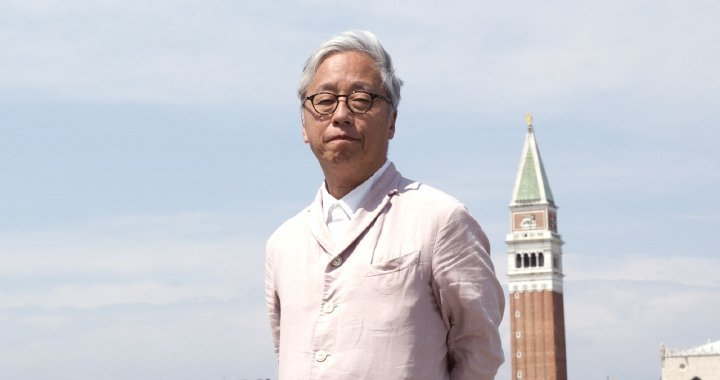
Self-made architect Sugimoto
An interview with Japanese artist Hiroshi Sugimoto
Una Meistere and
05/06/2015
On the morning of May 7, San Giorgio Maggiore Island is an oasis of calm comapred to Venice, which is being overrun by hordes of refined and stunning people from the world of art. Famous Japanese photographer Hiroshi Sugimoto, who is here for the opening of his architectural work of art Glass Tea House Mondrian, meets with us for a short conversation, in which he tells us that he enjoys thinking about people without the presence of other people. In this particular moment and place, for people worn out by the crowds at Giardini and Arsenale, this is a very understandable sentiment. It seems that Sugimoto himself embodies absolute tranquility and that he is able to pass this feeling on to those around him, thereby freeing their minds for a moment from the nervousness and constant agitation that is so common now in the 21st century.
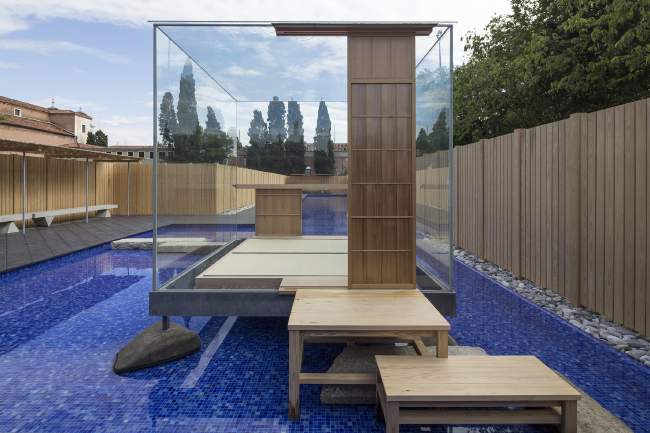
Hiroshi Sugimoto. The Glass Tea House Mondrian. © Hiroshi Sugimoto + New Material Research Laboratory. Courtesy of La Stanze del Vetro (Fondazione Giorgio Cini and Pentagram Stiftung). Sponsors: Sumitomo Forestry and Fondazione Bisazza. Photo: © Hiroshi Sugimoto + New Material Research Laboratory
Sugimoto’s tea pavilion, an environmental object built in the garden of a former monastery, is just as minimalistic and harmonic as the relationship between the sea and sky in his photographs. But, unlike the black-and-white refinement of his photographs, the pavilion includes colour – an intense blue radiating out from the pool’s tiles and breaking through the surface of the water to create an absolutely concordant rhythm between the object’s vertical and horizontal lines, between the openness of glass and the transparency of water. These various degrees of fragility are balanced by a cedar wood shell (built without the use of a single nail), at the centre of which stands the glass, cube-shaped tea pavilion housing the sculptural elements of a tea ceremony. Sugimoto was inspired by Japanese culture, in which the tea ceremony is one of the most essential rituals, along with the ability to think laconically and in abstract forms. He created the pavilion as a bridge between modern Europe and Japanese traditions, noting that the tea ceremony had already developed a very minimalistic aesthetic by the 16th century. At the same time, the pavilion is also a symbolic dedication to Dutch artist Piet Mondrian, one of the founders of the De Stijl modernist movement. Sugimoto stated in a press conference: “I decided that a Japanese transliteration of the name Mondrian would be an ideal name. I combined three characters – 聞鳥庵 – that can be translated as ‘a modest house where one can hear the birds sing.’ I like to think that this tea house was designed by Mondrian after he heard Sen no Rikyû, one of the greatest masters of the tea ceremony, speaking to him through birdsong.” As Mondrian once said, “I wish to approach truth as closely as is possible, and therefore I abstract everything until I arrive at the fundamental quality of objects.” Glass Tea House Mondrian is a seasonal object commissioned by Le Stanze del Vetro, and in a way it acts like a confrère to the Serpentine Galleries’ summer pavilions. Visitors will be able to observe tea ceremonies at Sugimoto’s pavilion all summer long, until November 29.
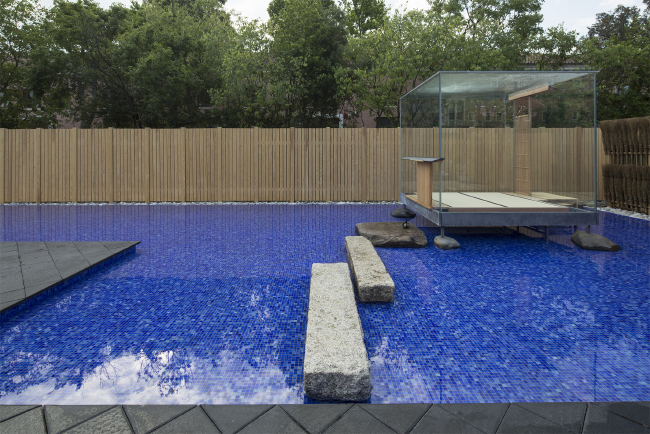
Hiroshi Sugimoto. The Glass Tea House Mondrian. © Hiroshi Sugimoto + New Material Research Laboratory. Courtesy of La Stanze del Vetro (Fondazione Giorgio Cini and Pentagram Stiftung). Sponsors: Sumitomo Forestry and Fondazione Bisazza. Photo: © Hiroshi Sugimoto + New Material Research Laboratory

Hiroshi Sugimoto. The Glass Tea House Mondrian. © Hiroshi Sugimoto + New Material Research Laboratory. Courtesy of La Stanze del Vetro (Fondazione Giorgio Cini and Pentagram Stiftung). Sponsors: Sumitomo Forestry and Fondazione Bisazza. Photo: © Hiroshi Sugimoto + New Material Research Laboratory
What prompted you to begin focussing on architecture eight years ago?
I had to install my own solo exhibitions at various prestigious museums around the world, museums like New York’s Metropolitan [Museum of Art] and Frank Gehry’s Guggenheim [Museum] in Bilbao.... I just tried making drawings of how to place the walls and how to build the exposition. And I came to the understanding that most of the museums in the world are simply awful from a design point of view. So I decided that I need to work in architecture myself. In other words, I’m a self-made architect.
You use the word “awful”. Why is that?
Architects don’t think about how to show the art. They’re only interested in the designed structures. Architects think museums look best without art in them. They want empty spaces.
Do you think it’s possible for art and architecture to live together in mutual harmony?
Yes. In this case [Glass Tea House Mondrian], the architecture itself is the art. But in most cases, architecture isn’t art. Do you think Frank Gehry’s buildings are art?
But what do you think is the best exhibition space in the world?
Nature itself.
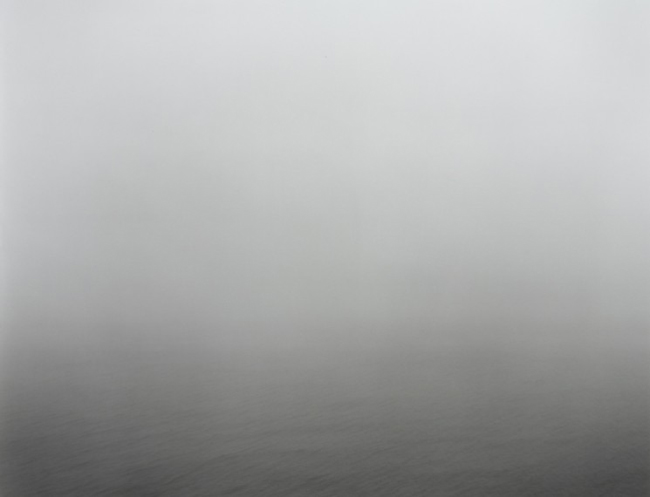
Hiroshi Sugimoto. Baltic Sea, Rugen. 1996. © Hiroshi Sugimoto and Fraenkel Gallery
As your photographs testify, you’ve always felt a link with modernism.
Yes, that’s why my tea house has such a simple form. In a way, it’s like an extension of modernist studies. You know, modernism – the abstraction of an image – in Japan, it can be traced back to the 16th century.
You also created a very special photograph of Le Corbusier’s legendary Villa Savoye.
That was the beginning of 20th-century modernism.
The Japanese art collector Obayashi, in whose gallery/guest house this photograph was displayed for a long time, told a very interesting story about it....
That it’s not in focus?
Yes, and that it lets one look into the architect’s thoughts and what’s going on in his mind.
Yes, the vision of the architect’s mind. When the building is built, you see the reality. But the image before it’s built is the best view. Starting from the finished building, I tried to reach the level of the idea.
What’s your next architecture project?
I’m building my own foundation in Japan, a half-hour’s drive from Tokyo. It will be the best art space.
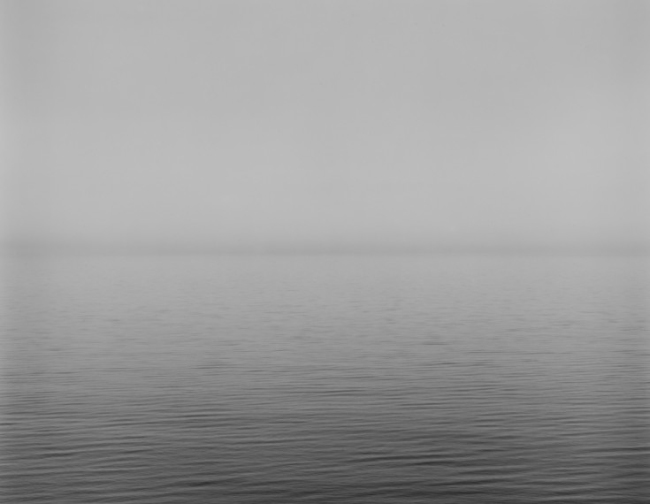
Hiroshi Sugimoto. Lake Superior. 2003. © Hiroshi Sugimoto and Fraenkel Gallery
But you’re still taking photographs, yes?
Yes, I was in Rome yesterday and photographed the Pantheon in the moonlight. There was a full moon last night. I don’t earn much with architecture; instead, I spend my money on it.
In today’s world – where photography has become such a common, everyday thing – has it not lost its value?
I continue to work in a 19th- and 20th-century style. I still use gelatin silver photography. Not digital.
Why do you associate so closely with black-and-white photography?
Colour is too easy. Colour is made in a factory, whereas I myself control the whole process of black-and-white photography, 100% from beginning to end. And the tonality of a black-and-white photograph is much better. Colour represents the chemical world, the artificial world, which doesn’t represent reality. Black-and-white, on the other hand, is silver. The material is genuine silver. It has a presence. Colour photography is fake.
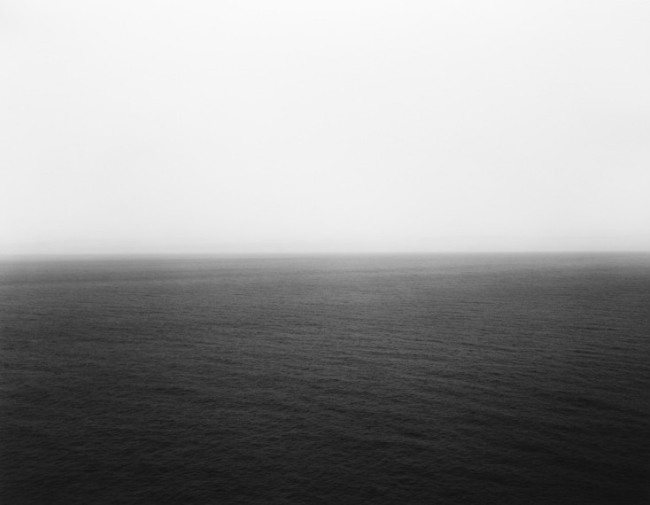
Hiroshi Sugimoto. North Atlantic Ocean, Newfoundland, 1982. © Hiroshi Sugimoto and Fraenkel Gallery
Why are you so fascinated by the sea and the horizon?
I don’t like to have people in my pictures. I want quiet things. The seascape – that’s the most simple, minimalistic landscape. Just one line and the sky and the water.
Why do you not like people?
They’re noisy. I want to meditate, I want to concentrate. I think about humans without humans.
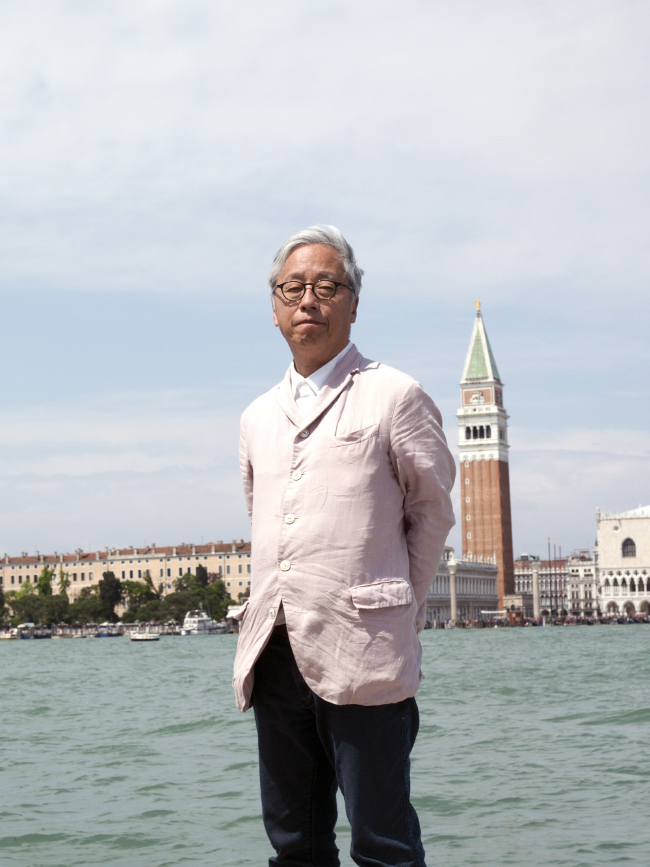
Hiroshi Sugimoto. © Hiroshi Sugimoto + New Material Research Laboratory